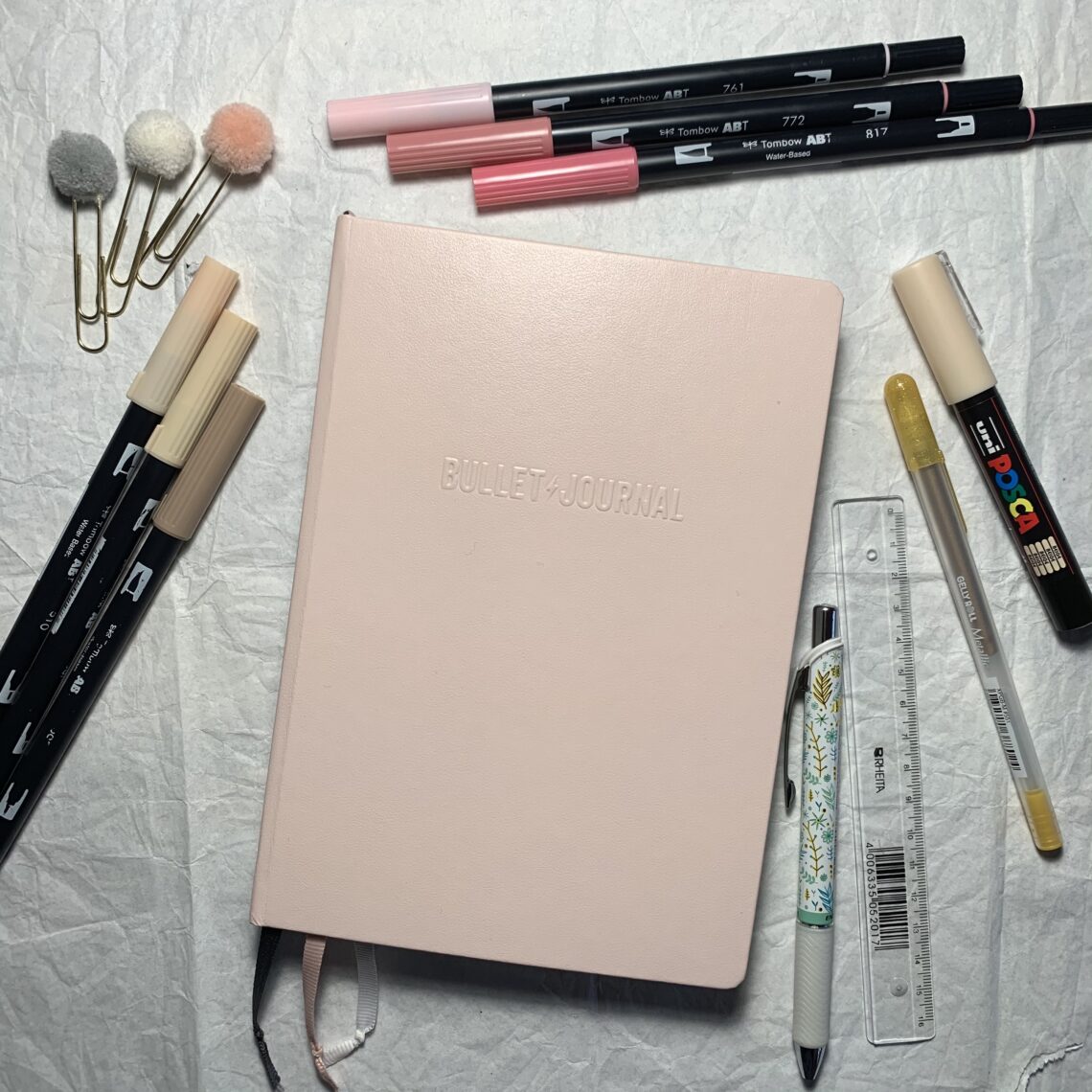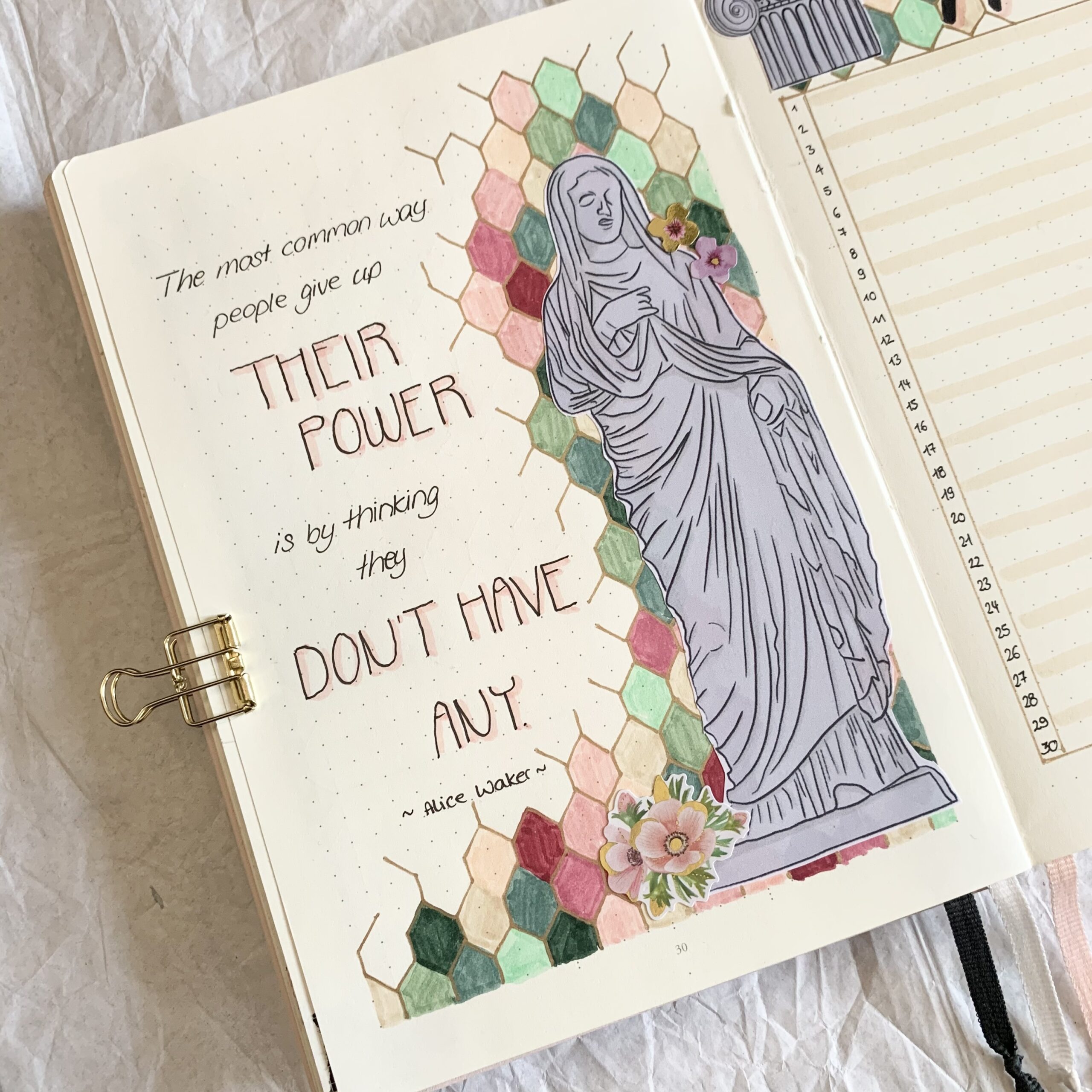
5 tips to find the right Bullet Journal
The amount of Bullet Journals available in the internet and in local stores can be overwhelming. Especially in the past years a lot of stores popped up and added many journals and notebooks to take into consideration when choosing a Bullet Journal.
As companies may change and their available journals as well, I want to focus on key aspects that are important no matter which company the journal is from.
So lets start right away!
Tip No. 1: Wants & Needs
Think about what you want and what you need. Do you want to have a minimalistic journal? Do you travel a lot? Which pens do you use and how big is your bag? This may be confusing in the beginning but your lifestyle is important for your bullet journal – and your bullet journal is important for your lifestyle. Read the next tips, and perhaps you can answer the questions afterwards.
Tip No. 2: Size
Notebooks that can be used as a Bullet Journal come in various sizes. A6, A5, A4 are the most popular ones, as well as the sizes inbetween B6, B5 or even B4. You better look for the sizes before deciding which notebook you want to use. If you carry a small handbag, you might have less space for a notebook than if you’re carrying a backpack. Or you just want to use your notebook at home? Then the size doesn’t matter at all as your journal may be on your desk most of the time.
Tip No. 3: Cover
This is a rather underrated topic, but in my opinion the cover should be under consideration as well. I bought my first notebook and was so happy about it – but then I found out that my darker backpack left dark marks and dirty edges on the light blue cover. I had to clean the cover almost every day and was so frustrated! The next cover I chose was made from paper – it didn’t last very long – because, you know, its paper.
Tip No. 4: Miscellanous
There’s a lot of nice gimmicks that might be useful. For example a pen loop, a ribbon or some kind of closure. Some of them might be more useful, some of them might not be useful. For me a penloop, a closure, ribbons and a bag in the back of the journals are important, but I also already used journals that had none of these features. They are not too important as there are ways to substitute them. Some shops sell e.g. pen loops individually and other items can even be made by yourself!
Also some journals do have pre-printed pages, which might be useful for some people. Especially beginners might be happy of a prepared key, future log or index pages.
Tip No. 5: Paper
Lets talk about the most important thing: the paper. Most of you might know regular copy paper, which has 80 gsm. With this number the weight and thickness of the paper is described. The paper of notebooks varies from 50 gsm (Tomoe River Paper) up to 170 gsm paper. The lower numbers indicate a thinner and lighter paper, the higher numbers a thicker and heavier paper. If you only write with a gel pen or a rollerball pen the weight of the paper doesn’t matter too much. When using art supplies like felt tip pens, brush pens, stamping ink or even water color the thicker paper is more suitable and pretty important.
But with thicker paper also comes more weight, a thicker journal and as well fewer pages in a journal.
If you’re writing with a fountain pen you might need a coated paper as well, where the feather glides smoothly across the paper and the ink doesn’t smudge.
And the next question is the color of the paper. The whiter the paper, the more it got bleached. This is not evironmental friendly.
Coming with the paper we need to talk about the printed items on the paper as well. Usually people use dotted paper for bullet journaling, because the dots are comfortable like a grid paper but almost not visible. But there may be notebooks where the color of the print is darker or lighter, askew, smudgy or not aligned. Some people don’t worry about that, others won’t use a notebook with too dark dots.
This is where we’re again comping back to Tip No. 1. You definetly need to think about what you’re going to do and what is important for you. There is definetly a journal out there, that suits your needs! You’ll just have to find it and be aware of some things I mentioned.
But remember: You can use any journal you want for bullet journaling. I already saw a person doing it in a regular school excercise notebook and I myself thought about using a watercolor sketch book (300 gsm cotton paper) as bullet journal too. In the end you are free to do what you want and experimenting is the key.

